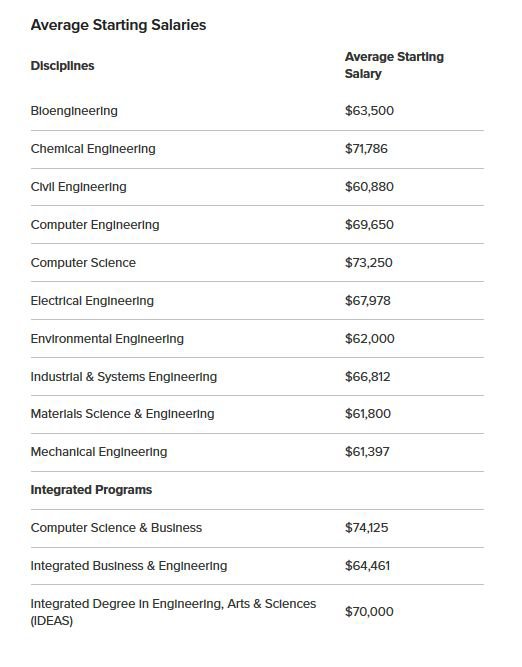
There are many possible career paths for an aerospace engineer. Here are some common options. Each option may offer different career possibilities and educational requirements. While students are expected to have a bachelor's in aerospace engineering, this doesn't mean that they can't apply for these jobs if they don't have any technical training. In fact, many people in the field started as apprentices and have advanced to executive and supervisory positions as they gain experience.
If you're interested in exploring the next big thing, aerospace manufacturing is a great career choice. Aerospace components require precision assembly, as opposed to mass-produced goods. Atypical geometry is another advantage of aerospace components. Additionally, manufacturers often use 3D printing and proprietary equipment to create aerospace parts. Although it can be challenging, this career path is very rewarding. This is the job that many people dream of. You'll be happy you chose this career because of the incredible rewards.

Many people associate aeronautical engineering with aviation. But these engineers can also work in space or in a traditional aerospace company. They can also work at workshops or production hangars. This is not a common engineering career path. It's specialized and there is no single way that will work. To help with this, there are several different ways to pursue this career.
Entry-level positions in aerospace engineering require a bachelor's degree. But if you'd like to get a higher salary, you may consider an aerospace engineering master's degree. Graduate degrees can help you consolidate knowledge from your undergraduate degree and make it easier to succeed in the field. Many employers also offer tuition reimbursement programs to aerospace engineering graduates. These are the two best career options if you want to be an aerospace engineer.
Aeronautical engineering works with spacecraft, and other vehicles that orbit the stars. They create new technologies and test prototypes. They also study the aerodynamic properties and surfaces of control surfaces. Aerospace engineering is a career that will allow you to create new technologies in commercial aviation, space exploration, defense, and other areas. There is a lot to learn and many opportunities. If you're passionate about this area, there are many rewarding options.

Many universities offer excellent degrees in aerospace in the UK and overseas. For example, the University of Alberta offers a major in aerospace and has a group of dedicated aerospace students. Delft University of Technology and Superior Institute of Aeronautics and Space both offer aerospace engineering programs in the UK. There are a number of other good options as well. However, the Cambridge University Program is undoubtedly one of the best in all of the world.
Aerospace engineers will learn the principles of aerodynamics and rocket physics, including fluid flow and structural design. They will also learn how scale models can be tested and constructed, as well how to fly. In addition, they will have a solid background in math, physics, mechanics, as well as electronics. The constant search for new aerodynamics, and better design will help increase environmental awareness. These knowledge can be applied in many areas, such as energy harvesting and sleep apnea.
FAQ
What is the Most Hardest Engineering Major?
Computer science is the most difficult engineering degree because you must learn everything from scratch. It is also important to be creative.
Programming languages include C++ and Java, Python, JavaScripts, PHP, HTML, CSS and SQL.
Understanding how computers work is another important skill. You will need to know about hardware, software architectures and operating systems.
If you want to become an engineer, you should definitely consider studying Computer Science.
What does a civil engineer do?
Civil engineering deals with the construction and design of large-scale structures, such as bridges, roads, buildings, dams and tunnels. It includes all aspects, such as foundations, geotechnics. hydraulics. soils. Environmental impact assessment. Safety analysis. Traffic management. Civil engineers make sure that the project achieves its goals while remaining cost-effective and sustainable. They must ensure that the structure is safe and durable.
They also help plan and implement public works programs. For example, they may be responsible for the construction or design of a bridge, road, or tunnel.
How much do engineers make an hour?
This varies from one person or company to the next. However, the average salary for an entry-level software engineer is around $60,000 per year. After you have been working for a few more years, your average salary may rise to over $100,000.
What do industrial engineers do?
Industrial engineers study how things work, operate, and interact.
They ensure that machinery, plants and factories operate safely and efficiently.
They design and implement equipment, controls, or operations that make it easier for workers, to accomplish their tasks.
They also ensure that machines meet safety standards and comply with environmental regulations.
What is a Mechanical Engineer?
A mechanical engineer designs machines, vehicles, tools, products, and processes used by humans.
Mechanical engineers use mathematics, physics, and engineering principles to create practical solutions to real-world problems.
A mechanical engineer can be involved in product design, production, maintenance quality control, research, testing or sales.
Statistics
- 14% of Industrial engineers design systems that combine workers, machines, and more to create a product or service to eliminate wastefulness in production processes, according to BLS efficiently. (snhu.edu)
- Typically required education: Bachelor's degree in aeronautical engineering Job growth outlook through 2030: 8% Aerospace engineers specialize in designing spacecraft, aircraft, satellites, and missiles. (snhu.edu)
External Links
How To
How to use an Engineering Technical Pen
A good engineering technical pen should have:
-
A ergonomic grip
-
A comfortable writing surface (preferably a rubberized grip)
-
Access to ink cartridges easily
-
There is enough space to correct mistakes
-
Nibs of high quality
-
Ergonomics for prolonged periods of usage
-
Good visibility of the ink cartridge level
-
Low weight
-
Good price/value ratio
You'll need to learn how to use these tools properly.